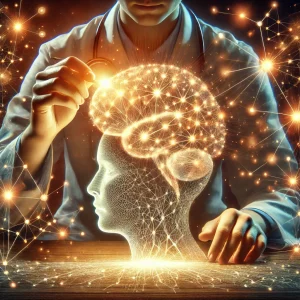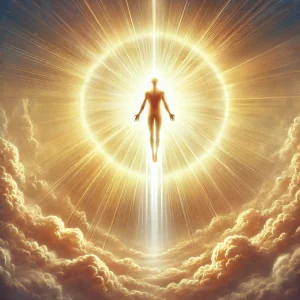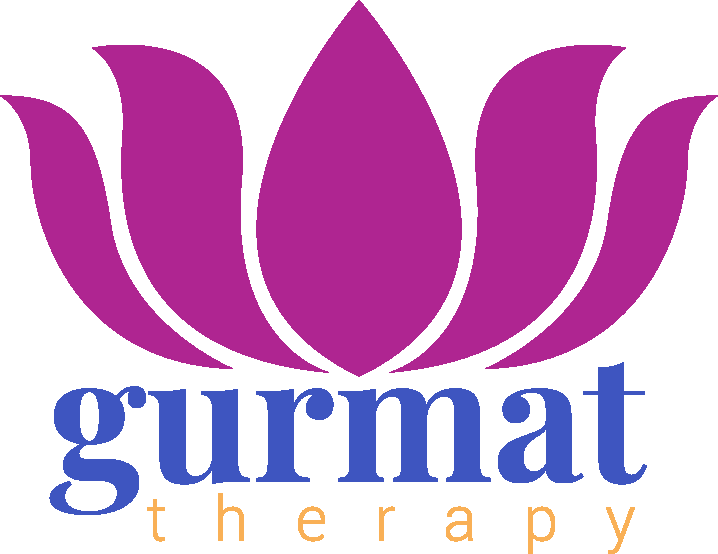 : Ontological Psychosomatic Insights of Sri Guru Granth Sahib Ji
: Ontological Psychosomatic Insights of Sri Guru Granth Sahib Ji
Abstract (Gurmat as Consciousness Science)
The twentieth-century emergence of psychoneuroimmunology (PNI)—the study of interactions between psyche, nervous system, and immunity—revolutionized biomedical science by demonstrating that stress, cognition, and emotional states directly shape health outcomes. Yet, centuries earlier, Sri Guru Granth Sahib Ji (SGGS) presented a far more comprehensive model of psychosomatic health. Rooted in Gurmat, the science of consciousness, Gurbani teaches that illness originates in disturbances of mind and ego (haumai), which manifest physiologically, and that health arises from alignment with Naam—the ontological vibration of Being.
While PNI validates the mind–body–immune connection, it remains confined to neurobiological correlates. Gurmat extends beyond, situating health within the transformation of consciousness from Manmukh (ego-identified) to Gurmukh (ontological self), where the individual harmonizes with Hukam (cosmic order). Gurbani thus not only predates psychoneuroimmunology but also surpasses it, providing an ontological foundation where health integrates mental, emotional, physiological, and transpersonal dimensions. This article argues that Gurmat is the yet-undiscovered science of consciousness, anticipating the future trajectory of integrative medicine and consciousness research.
Introduction (Gurmat as Consciousness Science)
The modern rediscovery of the mind–body connection through psychoneuroimmunology (PNI) has dramatically altered biomedical thought. Stress, trauma, and depression are now known to impair immune function (Kiecolt-Glaser & Glaser, 2002), while mindfulness, meditation, and compassion practices enhance psychophysiological resilience (Davidson et al., 2003). The groundbreaking work of Ader and Cohen (1975) established that psychological processes can condition immunity, initiating a paradigm shift away from a strictly mechanistic view of health.
Yet, long before this biomedical revolution, Sri Guru Granth Sahib Ji (SGGS) articulated a science of consciousness (Gurmat) that framed human health in profoundly psychosomatic terms. In Gurmat, health (sehaj, tandurusti) is not merely the absence of disease but the harmonious alignment of body, mind, and consciousness within Hukam (cosmic order). Gurbani explicitly links mental-emotional states to physical illness:
“ਮਨ ਕਾ ਰੋਗੁ ਤਨਿ ਲੈ ਰੋਗੁ ॥”
Man kā rog tan lai rog.
The disease of the mind becomes the disease of the body. (SGGS, Ang 1140)
At the same time, Gurbani prescribes the medicine:
“ਸਰਬ ਰੋਗ ਕਾ ਅਉਖਦੁ ਨਾਮੁ ॥”
Sarab rog kā a-ukhad Naam.
The Naam is the medicine for all disease. (SGGS, Ang 274)
These insights parallel modern findings in PNI that stress and mental disturbance weaken immunity, while meditation enhances it. But Gurbani goes further: it situates health within an ontological transformation of consciousness. The individual moves from fragmentation (haumai, egoic afflictions) to wholeness (Naam, Shabad, Hukam), a journey from Manmukh to Gurmukh.
Thus, while PNI is a late 20th-century discovery within biomedical science, Gurmat presents a 16th-century ontology of consciousness that not only includes psychosomatic health but transcends it. Gurmat can therefore be understood as a science of consciousness yet to be discovered by science. Its insights point to a future integrative medicine where psychoneuroimmunology will evolve into consciousness medicine, aligning scientific inquiry with the ontological wisdom of Guru Nanak.
Section 2: Modern Psychoneuroimmunology 
2.1 Origins of PNI
Psychoneuroimmunology (PNI) is the interdisciplinary science that studies how psychological processes (thoughts, emotions, stress, trauma) influence the nervous and immune systems. Its formal origins are traced to the work of Robert Ader and Nicholas Cohen (1975), who demonstrated that immune responses could be classically conditioned in laboratory rats. This breakthrough shattered the biomedical dogma that immunity was autonomous and independent of psychological influence.
Since then, PNI has documented numerous pathways by which mind and emotions directly affect immunity and disease progression.
2.2 Stress, Emotions, and Immunity
Research shows that chronic stress and negative emotional states dysregulate the hypothalamic–pituitary–adrenal (HPA) axis, elevating cortisol and adrenaline. These stress hormones:
Suppress natural killer (NK) cells.
Alter cytokine balance.
Increase susceptibility to infections and inflammatory diseases.
Key findings:
Kiecolt-Glaser & Glaser (2002): marital conflict and caregiving stress impair wound healing and immune response.
Dhabhar (2014): chronic stress accelerates inflammatory disease and impairs adaptive immunity.
This resonates with Gurbani’s insight that mental agitation (rog of mann) becomes bodily disease.

2.3 Depression and Immune Dysregulation
Depression is now understood as both a psychological and inflammatory condition. Elevated pro-inflammatory cytokines (IL-6, TNF-α) correlate with depressive symptoms and poor physical health.
PNI research confirms what Gurbani described: the mind’s suffering (dukh of mann) shapes the body’s condition.
2.4 Meditation, Compassion, and Psychophysiological Coherence
One of the most significant contributions of PNI is documenting how contemplative practices strengthen immunity:
Davidson et al. (2003): mindfulness meditation increased antibody titers to influenza vaccine.
Kabat-Zinn (1990s onward): MBSR reduced stress and improved immune markers.
McCraty et al. (2006): heart coherence practices increased vagal tone, lowered stress hormones, and enhanced resilience.
Compassion meditation studies show increases in oxytocin, vagal activity, and immune balance (Pace et al., 2009).
This scientific evidence mirrors Gurbani’s claim that Naam, Simran, and cultivating daya (compassion) are medicine for all diseases.
 2.5 PNI’s Limitations
2.5 PNI’s Limitations
Despite its breakthroughs, PNI remains bound to a reductionist framework:
It measures neurochemical correlates but does not address the ontological ground of consciousness.
It recognizes psychosomatic links but not the spiritual dimension of health.
It lacks a transformative model of identity (from ego to ontological self) that Gurbani provides.
Thus, PNI is a step towards what Gurmat described centuries earlier: a consciousness-based science of health.
Comparative Table: Gurbani vs Psychoneuroimmunology
| Theme | Gurbani (Science of Consciousness) | Psychoneuroimmunology (Science of Mind–Body–Immunity) |
| Origin of Disease | “Man kā rog tan lai rog” (SGGS 1140) – Disease begins in mind and manifests in body. | Stress, depression, trauma dysregulate HPA-axis → immune dysfunction. |
| Root Pathology | Haumai (egoic identity) – chronic spiritual disease. | Chronic stress & maladaptive cognition/emotion. |
| Healing Principle | Naam – ontological medicine, restores alignment with Hukam. | Meditation, mindfulness, positive emotions regulate immunity. |
| Health Defined As | Sehaj (equilibrium, ontological harmony). | Homeostasis & resilience (biopsychosocial). |
| Transformative Model | From Manmukh (ego-driven) to Gurmukh (consciousness-aligned). | No transformation of self-identity; limited to symptom reduction. |
| Scope | Mental, emotional, physiological, and transpersonal health. | Neurobiological and immunological correlates of psychological states. |
| Timeframe | Articulated 16th century (Guru Nanak, SGGS). | Established in late 20th century (Ader & Cohen, 1975). |
| Ontology | Consciousness is primary; body-mind are expressions of consciousness. | Body-brain-immune interaction; consciousness reduced to neurobiology. |
Section 3: Convergence Between Gurbani and PNI
3.1 Stress, Haumai, and Immune Dysfunction
Modern PNI confirms that chronic stress, negative emotions, and maladaptive cognition weaken immune function. Elevated cortisol and pro-inflammatory cytokines are directly correlated with stress and depression (Kiecolt-Glaser & Glaser, 2002; Dhabhar, 2014).
Gurbani anticipated this centuries earlier, describing haumai (ego) and the five afflictions (kam, krodh, lobh, moh, ahankaar) as the root “diseases” that disturb not only the mind but also the body:
“ਹਉਮੈ ਦੀਰਘ ਰੋਗੁ ਹੈ ਦਾਰੂ ਭੀ ਇਸੁ ਮਾਹਿ ॥”
Haumai dīragh rog hai, dārū bhī is māhi.
Ego is a deep chronic disease, but its cure also lies within it. (SGGS, Ang 466)
Thus, what PNI calls stress pathology, Gurbani recognized as haumai pathology—a chronic distortion of consciousness that manifests physiologically.
3.2 Depression, Suffering, and Inflammation
PNI research shows that depression correlates with inflammatory dysregulation (increased IL-6, TNF-α), contributing to both mental suffering and physical illness. Gurbani repeatedly links the dukh (mental-emotional pain) of the mind to the weakening of the body:
“ਮਨ ਕਾ ਰੋਗੁ ਤਨਿ ਲੈ ਰੋਗੁ ॥”
Man kā rog tan lai rog.
The disease of the mind becomes the disease of the body. (SGGS, Ang 1140)
Thus, both Gurbani and PNI emphasize that psychological suffering translates into somatic disease. Gurbani, however, goes further by describing the ontological root of suffering as disconnection from Naam.
3.3 Naam, Meditation, and Immune Regulation 
PNI has shown that meditation enhances immune function:
Davidson et al. (2003): Mindfulness increased antibody titers.
Pace et al. (2009): Compassion meditation increased immune resilience.
Gurbani identifies Naam—the remembrance and vibration of Being—as the ultimate medicine for all disease:
“ਸਰਬ ਰੋਗ ਕਾ ਅਉਖਦੁ ਨਾਮੁ ॥”
Sarab rog kā a-ukhad Naam.
The Naam is the medicine for all disease. (SGGS, Ang 274)
While PNI shows how meditation reduces stress and regulates immunity, Gurbani situates this within an ontological healing principle: meditation (Naam Simran) realigns the fragmented ego with the wholeness of consciousness. This produces not only physiological benefit but also spiritual liberation (mukti).
3.4 Compassion, Positive Emotions, and Healing
Compassion-based interventions have been shown to improve immune markers and emotional resilience (Pace et al., 2009). Gurbani consistently prescribes daya (compassion), nimrata (humility), and prem (love) as healing states of being:
“ਦਇਆ ਕਪਾਹ ਸੰਤੋਖੁ ਸੂਤੁ ਜਤੁ ਗੰਢੀ ਸਤੁ ਵਟੁ ॥”
Dayā kapāh santokh sūt, jat gaṇḍhī sat vaṭ.
Make compassion the cotton, contentment the thread, self-discipline the knot and truth the twist. (SGGS, Ang 948)
Here, compassion is not simply an emotion but the fabric of psycho-spiritual health. PNI measures the physiological correlates (oxytocin, vagal tone), while Gurbani frames compassion as an ontological medicine for the human condition.
3.5 Sehaj (Equilibrium) and Psychophysiological Coherence
PNI research demonstrates that meditation and heart-brain coherence create balance in the autonomic nervous system, lowering stress and strengthening immunity (McCraty et al., 2006). Gurbani names this state sehaj—a condition of effortless ontological equilibrium:
“ਸਹਜਿ ਮਿਲੇ ਸੋਈ ਪਰਵਾਣੁ ॥”
Sahaj mile so-ee parvāṇ.
Only those who merge in the state of equilibrium are accepted. (SGGS, Ang 1245)
Thus, the coherence that PNI describes in neurophysiological terms, Gurbani describes as sehaj, an ontological state of harmony with Hukam.
3.6 Transformation of Self: From Manmukh to Gurmukh
PNI interventions aim at stress reduction and symptom management. Gurbani, however, frames health as a transformation of identity: from Manmukh (ego-driven, fragmented self) to Gurmukh (consciousness-aligned being).
“ਗੁਰਮੁਖਿ ਹੋਵੈ ਸੁ ਨਿਰਮਲੁ ਕਾਇਆ ॥”
Gurmukh hovai so nirmal kā-i-ā.
The Gurmukh’s body becomes immaculate and pure. (SGGS, Ang 31)
This transformation is absent in PNI, which remains within the biopsychosocial framework. Gurbani thus transcends PNI, situating health in the ontological science of consciousness (Gurmat).
Comparative Table 2: Gurbani’s Ontological Consciousness Medicine vs PNI’s Biopsychosocial Model
| Dimension | Gurbani (Gurmat: Science of Consciousness) | Psychoneuroimmunology (Biopsychosocial Model) |
| Ontological Foundation | Consciousness (Naam, Shabad, Hukam) is primary; body-mind are expressions of consciousness. | Neurobiological reductionism; consciousness considered an emergent property of brain. |
| Root of Disease | Haumai (egoic separation) — distortion of consciousness that manifests as psychosomatic dysfunction. | Stress, trauma, maladaptive cognition/emotion cause dysregulation of HPA axis and immunity. |
| Healing Principle | Alignment with Naam (ontological vibration of Being); realization of unity with Hukam. | Meditation/mindfulness reduce stress and improve immune regulation. |
| Definition of Health | Sehaj (ontological equilibrium); integration of mental, emotional, physiological, and transpersonal health. | Homeostasis and resilience within body-brain-immune systems. |
| Transformation of Self | Shift from Manmukh (ego-driven self) to Gurmukh (consciousness-aligned self). | No transformation of identity; aims at symptom reduction and coping. |
| Scope of Healing | Psycho-spiritual liberation (mukti); health as realization of true self beyond ego. | Psychophysiological well-being; improved disease outcomes. |
| Temporal Orientation | Health is trans-temporal: influences life, death, and post-death states of consciousness. | Temporal; limited to health during lifespan. |
| Methodology | Naam Simran, Shabad, Sangat, ethical living, alignment with Hukam. | Meditation, stress reduction, behavioral interventions. |
| Ultimate Goal | Ontological realization — freedom from suffering (dukh-sukh ateet, beyond duality). | Improved mental and physical health within biopsychosocial framework. |
| Chronology | Articulated in 16th century (Guru Nanak, SGGS). | Emerged in late 20th century (Ader & Cohen, 1975 onward). |
This table makes it clear that:
PNI = mind–body science.
Gurbani/Gurmat = consciousness science, where mind–body relations are secondary expressions of a deeper ontological truth.
Section 4: Gurbani’s Ontological Advance Beyond PNI
4.1 Limitations of PNI
Psychoneuroimmunology has advanced biomedical science by validating the interconnection of mind, body, and immunity. Yet, it remains fundamentally reductionist:
It measures correlates of consciousness (e.g., cortisol, cytokines, neural activity) but does not address consciousness itself.
Its scope is confined to disease management and improved resilience within lifespan, without reference to ontological or transpersonal dimensions.
Healing is framed as regulation of stress responses, not transformation of identity or liberation from suffering (dukh-sukh ateet).
Thus, while PNI provides valuable insights, it remains a neurobiological sub-science, unable to articulate the full psycho-spiritual reality of health.
4.2 Gurmat as Science of Consciousness
In contrast, Gurbani presents Gurmat as a science of consciousness (Atam Vigyan) where the human being is understood ontologically. Here, body and mind are not independent entities but expressions of consciousness (surt). Health and disease are consequences of alignment or misalignment with this ontological ground:
“ਹਉਮੈ ਦੀਰਘ ਰੋਗੁ ਹੈ ਦਾਰੂ ਭੀ ਇਸੁ ਮਾਹਿ ॥”
Haumai dīragh rog hai, dārū bhī is māhi.
Ego is the chronic disease, but its cure lies within. (SGGS, Ang 466)
This reveals a principle absent in PNI: ego itself is pathology, and liberation from ego (haumai) is both spiritual and psychosomatic healing.
4.3 Beyond Psychosomatic: Ontological Health
Whereas PNI shows the biological consequences of psychological states, Gurbani situates health in the ontological realization of Naam. Naam is not simply a mental mantra but the vibrational consciousness underlying reality.
“ਸਰਬ ਰੋਗ ਕਾ ਅਉਖਦੁ ਨਾਮੁ ॥”
Sarab rog kā a-ukhad Naam.
Naam is the medicine for all diseases. (SGGS, Ang 274)
This statement transcends the scope of PNI: Naam does not just regulate immunity, but dissolves the ontological root of disease—egoic separation from Being. Health is therefore not only psychophysiological but also transpersonal: alignment with Hukam, realization of the true Self, and liberation from birth-death cycles (avaan jaan).
4.4 Sehaj and Coherence: From Regulation to Realization
PNI interprets meditation as stress regulation and coherence induction (lower cortisol, increased HRV, immune balance). Gurbani, however, interprets the meditative state as sehaj—an effortless equilibrium in consciousness where dualities dissolve:
“ਸਹਜਿ ਸਮਾਧਿ ਅਨਹਤਿ ਬਾਜੇ ॥”
Sahaj samādh anahat bāje.
In effortless equipoise, the unstruck sound resounds. (SGGS, Ang 918)
Here, meditation is not only neurophysiological regulation but the doorway into transcendent realization of the eternal vibration (anhad shabad).
4.5 Transformation of Identity: From Manmukh to Gurmukh
PNI lacks a framework for transformation of self. It assumes the psychological ego as the subject of healing. Gurbani, however, sees the ego (manmukh) as the very source of pathology. True health arises only through transformation into gurmukh—one aligned with consciousness, truth, and Hukam:
“ਗੁਰਮੁਖਿ ਹੋਵੈ ਸੁ ਨਿਰਮਲੁ ਕਾਇਆ ॥”
Gurmukh hovai so nirmal kā-i-ā.
The Gurmukh’s body becomes immaculate and pure. (SGGS, Ang 31)
This is not stress management but ontological healing, where the very structure of selfhood is reconstituted in alignment with Being.
4.6 Beyond Lifespan: Death, Transmigration, and Consciousness Continuity 
PNI restricts itself to health within the biological lifespan. Gurbani expands health into pre-death, death, and post-death consciousness. The state of mind and consciousness at death (ant kaal) influences the trajectory of the soul (jiv atma):
“ਅੰਤ ਕਾਲਿ ਜੋ ਲਖਮੀ ਸਿਮਰੈ ਐਸੀ ਚਿੰਤਾ ਮਹਿ ਜੇ ਮਰੈ ॥”
Ant kāl jo Lakhmī simrai, aisī cintā meh je marai.
At the final moment, one who remembers wealth, dies absorbed in that thought. (SGGS, Ang 526)
This indicates that ontological health must transcend death, a dimension completely absent from PNI. Gurmat therefore offers a science of continuity of consciousness, beyond the reach of modern biomedicine.
4.7 Towards a Consciousness Medicine 
The trajectory of PNI suggests that science is moving incrementally towards what Gurmat articulated centuries ago. As biomedicine expands into contemplative neuroscience, social genomics, and integrative health, it edges closer to recognizing that consciousness is primary. Gurbani already established this ontology:
“ਆਦਿ ਸਚੁ ਜੁਗਾਦਿ ਸਚੁ ॥ ਹੈ ਭੀ ਸਚੁ ਨਾਨਕ ਹੋਸੀ ਭੀ ਸਚੁ ॥੧॥”
Ād sach jugād sach, hai bhī sach Nānak hosī bhī sach.
True in the beginning, true throughout the ages, true now, forever true. (SGGS, Japji Sahib, Pauri 1)
Consciousness (Sat) is eternal, and health arises from alignment with it. Future medicine will inevitably evolve into consciousness medicine, rediscovering what Gurbani has preserved for centuries.
References
Gurbani (Sri Guru Granth Sahib Ji, SGGS)
Man jeetai jag jeet – “ਮਨਿ ਜੀਤੇ ਜਗੁ ਜੀਤੁ ॥” (Conquer the mind, and you conquer the world.) – SGGS, Ang 6.
Man sudh → sabh sudh – “ਮਨ ਕਾ ਸੁਧੁ ਹੋਇ ਤਾਂ ਸਭੁ ਸੁਧੁ ਹੋਇ ॥” (If the mind is pure, everything is pure.) – SGGS, Ang 468.
Man rog → tan rog – “ਮਨ ਕਾ ਰੋਗੁ ਤਨਿ ਲੈ ਰੋਗੁ ॥” (The disease of the mind becomes the disease of the body.) – SGGS, Ang 1140.
Haumai as chronic disease – “ਹਉਮੈ ਦੀਰਘ ਰੋਗੁ ਹੈ ਦਾਰੂ ਭੀ ਇਸੁ ਮਾਹਿ ॥” (Ego is a deep chronic disease, but its cure also lies within it.) – SGGS, Ang 466.
Naam as universal medicine – “ਸਰਬ ਰੋਗ ਕਾ ਅਉਖਦੁ ਨਾਮੁ ॥” (The Naam is the medicine for all disease.) – SGGS, Ang 274.
Sehaj equilibrium – “ਸਹਜਿ ਮਿਲੇ ਸੋਈ ਪਰਵਾਣੁ ॥” (Only those who merge in the state of equilibrium are accepted.) – SGGS, Ang 1245.
Gurmukh becomes immaculate – “ਗੁਰਮੁਖਿ ਹੋਵੈ ਸੁ ਨਿਰਮਲੁ ਕਾਇਆ ॥” (The Gurmukh’s body becomes immaculate and pure.) – SGGS, Ang 31.
Naam as healing from all pain – “ਹਰਿ ਬਿਨੁ ਰੋਗੁ ਨ ਉਤਰੈ ਕੋਇ ॥” (Without the Divine, disease never departs.) – SGGS, Ang 288.
Compassion as medicine – “ਦਇਆ ਕਪਾਹ ਸੰਤੋਖੁ ਸੂਤੁ ਜਤੁ ਗੰਢੀ ਸਤੁ ਵਟੁ ॥” (Make compassion the cotton, contentment the thread, self-discipline the knot and truth the twist.) – SGGS, Ang 948.
Ant kaal consciousness – “ਅੰਤ ਕਾਲਿ ਜੋ ਲਖਮੀ ਸਿਮਰੈ ਐਸੀ ਚਿੰਤਾ ਮਹਿ ਜੇ ਮਰੈ ॥” (At the final moment, one who remembers wealth dies absorbed in that thought.) – SGGS, Ang 526.
Ik Onkaar Ontology – “ਆਦਿ ਸਚੁ ਜੁਗਾਦਿ ਸਚੁ ॥ ਹੈ ਭੀ ਸਚੁ ਨਾਨਕ ਹੋਸੀ ਭੀ ਸਚੁ ॥੧॥” (True in the beginning, true throughout the ages, true now, forever true.) – Japji Sahib, Pauri 1.
Scientific & Academic References
Foundational PNI Research
12. Ader, R., & Cohen, N. (1975). Behaviorally conditioned immunosuppression. Psychosomatic Medicine, 37(4), 333–340.
13. Ader, R. (2001). Psychoneuroimmunology. Current Directions in Psychological Science, 10(3), 94–98.
Stress, Depression, and Immunity
14. Kiecolt-Glaser, J. K., & Glaser, R. (2002). Depression and immune function: Central pathways to morbidity and mortality. Journal of Psychosomatic Research, 53(4), 873–876.
15. Dhabhar, F. S. (2014). Effects of stress on immune function: The good, the bad, and the beautiful. Immunologic Research, 58(2–3), 193–210.
16. Segerstrom, S. C., & Miller, G. E. (2004). Psychological stress and the human immune system: A meta-analytic study of 30 years of inquiry. Psychological Bulletin, 130(4), 601–630.
Meditation, Compassion, and PNI
17. Davidson, R. J., Kabat-Zinn, J., Schumacher, J., et al. (2003). Alterations in brain and immune function produced by mindfulness meditation. Psychosomatic Medicine, 65(4), 564–570.
18. Kabat-Zinn, J. (1990). Full Catastrophe Living: Using the Wisdom of Your Body and Mind to Face Stress, Pain, and Illness. New York: Delacorte.
19. Pace, T. W., Negi, L. T., Adame, D. D., Cole, S. P., et al. (2009). Effect of compassion meditation on neuroendocrine, innate immune and behavioral responses to psychosocial stress. Psychoneuroendocrinology, 34(1), 87–98.
20. McCraty, R., Atkinson, M., & Tomasino, D. (2006). Psychophysiological coherence: A new paradigm for optimal functioning. Alternative Therapies in Health and Medicine, 12(4), 62–65.
Emerging Consciousness Science
21. Slavich, G. M., & Cole, S. W. (2013). The emerging field of human social genomics. Clinical Psychological Science, 1(3), 331–348.
22. Newberg, A. B., & Waldman, M. R. (2009). How God Changes Your Brain: Breakthrough Findings from a Leading Neuroscientist. Ballantine Books.
23. Varela, F. J., Thompson, E., & Rosch, E. (1991). The Embodied Mind: Cognitive Science and Human Experience. MIT Press.
24. Walach, H. (2014). Secular Spirituality: An Ongoing Challenge. Archive for the Psychology of Religion, 36(2), 139–155.
Suggested Secondary Sources on Gurmat as Consciousness Science
Mandair, A.-P. S. (2013). Religion and the Specter of the West: Sikhism, India, Postcoloniality, and the Politics of Translation. Columbia University Press.
Panesar, D. S. (forthcoming). Gurmat Therapy: Ontological Psychology and Consciousness Science.
Shergill, S. S. (2011). The Sikh Psyche: An Ontological Perspective on Wellbeing. Journal of Sikh Studies.
© D S Panesar 2025
Gurmat Psychology Series
